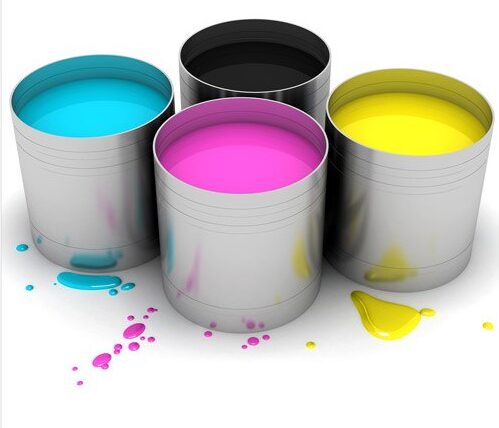Unlocking the Power of Four-Color Printing: A Comprehensive Exploration
In the dynamic world of modern printing, few techniques have had as profound an impact as four-color printing, also known as CMYK printing. This method has revolutionized the reproduction of vibrant, full-color images and graphics across a myriad of industries, from publishing and advertising to packaging and beyond. Join us as we embark on a comprehensive exploration of the principles, applications, advantages, and future trends of four-color printing.
The Evolution of Four-Color Printing
The concept of four-color printing emerged in the early 20th century as a refinement of the traditional color printing process. Prior to this innovation, color printing relied on a limited palette of primary colors. However, the introduction of the cyan, magenta, yellow, and black (CMYK) color model revolutionized color reproduction by enabling printers to achieve a broader spectrum of colors and more accurate representations of original artwork and photographs.
Understanding the Principles of Four-Color Printing
At its core, four-color printing operates on the principles of subtractive color mixing. The CMYK color model utilizes four primary ink colors—cyan, magenta, yellow, and black—to produce a wide range of hues and tones. Each color absorbs specific wavelengths of light, resulting in the perception of different colors when combined. By varying the proportions and overlapping these ink colors in precise patterns, printers can recreate intricate details, smooth gradients, and lifelike images with remarkable fidelity.
Advantages of Four-Color Printing
Four-color printing offers several distinct advantages that have cemented its status as the industry standard for high-quality color reproduction:
- Versatility: Four-color printing can accurately reproduce a diverse range of colors and shades, making it suitable for a wide variety of printed materials, including photographs, illustrations, text, and graphics.
- Consistency: With advancements in color management technology, four-color printing ensures consistent and reliable color reproduction across different printing devices and substrates, maintaining the integrity of the original artwork or design.
- Quality: The precision and detail achieved through four-color printing result in sharp, vibrant prints that captivate audiences and convey a sense of professionalism and craftsmanship.
Applications of Four-Color Printing
The versatility of four-color printing lends itself to a multitude of applications across various industries:
- Publishing: Books, magazines, newspapers, and catalogs benefit from the rich, vibrant colors of four-color printing, enhancing visual appeal and reader engagement.
- Advertising and Marketing: Brochures, flyers, posters, and promotional materials leverage four-color printing to convey brand messages effectively and leave a lasting impression on consumers.
- Packaging: Product packaging designs utilize four-color printing to create eye-catching visuals that enhance product visibility and brand recognition on store shelves.

The Future of Four-Color Printing
As we gaze into the future of four-color printing, we anticipate a landscape ripe with innovation, driven by advancements in technology, sustainability, and automation. Let’s delve into the key areas that will shape the evolution of four-color printing in the years to come:
1. Digital Printing Technologies
Digital printing has been steadily gaining ground in the printing industry, offering advantages such as shorter turnaround times, cost-effectiveness for short print runs, and variable data printing capabilities. As digital printing technologies continue to evolve, we can expect further improvements in print quality, speed, and versatility. Innovations in inkjet and laser printing technologies are paving the way for faster production speeds, higher resolutions, and expanded color gamuts, bringing digital four-color printing closer to offset quality.
2. Environmental Sustainability
Environmental sustainability has become a pressing concern in the printing industry, prompting the development of eco-friendly ink formulations, recyclable materials, and energy-efficient printing processes. In response to growing environmental awareness, manufacturers are exploring alternative ink sources derived from renewable materials, such as soy-based and vegetable-based inks, which offer lower environmental impact without sacrificing print quality. Additionally, initiatives to reduce waste, minimize energy consumption, and promote responsible sourcing of raw materials are becoming integral to the future of four-color printing.

3. Integration of Artificial Intelligence (AI) and Automation
The integration of artificial intelligence (AI) and automation technologies is poised to revolutionize the way four-color printing workflows are managed and executed. AI-driven color management systems can analyze and optimize color profiles in real-time, ensuring consistent color reproduction across various printing devices and substrates. Automated workflows streamline production processes, from file preparation and prepress tasks to print scheduling and finishing, reducing human error, increasing efficiency, and lowering production costs.
4. Personalization and Variable Data Printing (VDP)
In an era of hyper-personalization, the demand for customized printed materials tailored to individual preferences and demographics is on the rise. Variable data printing (VDP) enables the seamless integration of personalized content, such as names, images, and messages, into printed materials, allowing marketers to create highly targeted and engaging campaigns. As the technology matures, we can expect to see greater adoption of VDP in areas such as direct mail, packaging, and promotional materials, driving higher response rates and customer engagement.

5. Augmented Reality (AR) and Interactive Print
Augmented reality (AR) technology holds the potential to transform printed materials into interactive, multimedia experiences. By embedding AR markers or codes within printed designs, users can unlock additional content, such as videos, animations, and product demonstrations, using their smartphones or tablets. This convergence of print and digital media opens up new avenues for storytelling, brand engagement, and consumer interaction, blurring the lines between traditional and digital media channels.
In conclusion, the future of four-color printing is brimming with promise, fueled by technological innovation, environmental consciousness, and a relentless drive for creativity and efficiency. As we embrace the opportunities and challenges that lie ahead, one thing is certain: four-color printing will continue to evolve and adapt to meet the ever-changing needs of the printing industry and the demands of an increasingly digital world. Join us on this exciting journey as we shape the future of printing together.
Conclusion
In conclusion, four-color printing continues to play a pivotal role in shaping the modern printing landscape. Its versatility, consistency, and quality make it an indispensable tool for printers, designers, and marketers seeking to deliver impactful, visually engaging printed materials. As technology advances and consumer demands evolve, the evolution of four-color printing promises to unlock new creative possibilities and redefine the boundaries of what is achievable in the realm of color reproduction and printing excellence. Join us as we embrace the future of four-color printing and witness its transformative impact on the world of visual communication.







